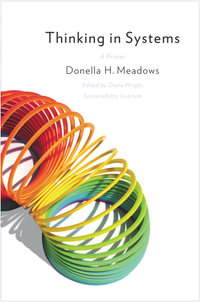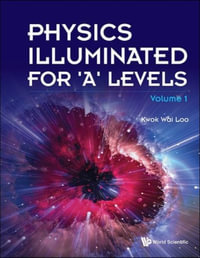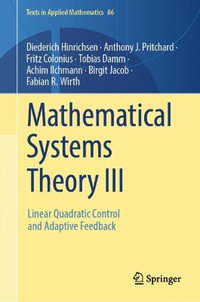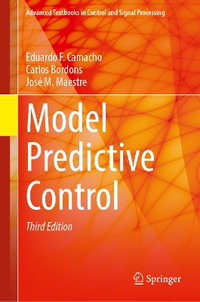| Necessity for a Science of Complex Systems | p. 1 |
| Introduction | p. 1 |
| Chaos | p. 4 |
| Chaos and Complexity | p. 8 |
| How Has Chaos Changed Our Way of Thinking? | p. 11 |
| Dialectic Method to Overcome the Antithesis Between Determinism and Nondeterminism or Between Programs and Errors | p. 11 |
| Dialectic Method to Overcome the Antithesis Between Order and Randomness | p. 12 |
| Beyond the Antithesis Between Reductionism and Holism | p. 12 |
| Dynamic Many-to-Many Relations and Bio-networks | p. 13 |
| The Necessity of Dynamic Many-to-Many Relations | p. 13 |
| Metabolic Systems, Differentiation, and Development | p. 15 |
| Ecosystems | p. 16 |
| Immune Systems | p. 17 |
| The Brain | p. 18 |
| Rugged Landscapes and Their Problems | p. 18 |
| Conclusion | p. 20 |
| The Construction of an Artificial (Virtual) World | p. 21 |
| A Trigger to Emergence | p. 24 |
| Beyond Top-Down Versus Bottom-Up | p. 26 |
| Methodology of Study of Complex Systems | p. 28 |
| Constructive Way of Understanding | p. 29 |
| Plural Views | p. 30 |
| Mathematical Anatomy | p. 31 |
| The Problem ofInternal Observers | p. 31 |
| Observation Problems from an Information-Theoretical Viewpoint | p. 33 |
| Observation Problems ofChaos | p. 33 |
| Undecidability and Entire Description | p. 37 |
| A Demon in Chaos | p. 38 |
| Chaos in the BZ Reaction | p. 39 |
| Noise-Induced Order | p. 43 |
| Could Structural Stability Lead to an Adequate Notion of a Model? | p. 47 |
| Information Theory of Chaos | p. 50 |
| CMLs: Constructive Approach to Spatiotemporal Chaos | p. 57 |
| From a Descriptive to a Constructive Approach of Nature | p. 57 |
| Coupled Map Lattice Approach to Spatiotemporal Chaos | p. 59 |
| Spatiotemporal Chaos | p. 59 |
| Introduction to Coupled Map Lattices | p. 61 |
| Comparison with Other Approaches | p. 64 |
| Phenomenology of Spatiotemporal Chaos in the Diffusively Coupled Logistic Lattice | p. 65 |
| Introduction | p. 65 |
| Frozen Random Patterns and Spatial Bifurcations | p. 66 |
| Pattern Selection with Suppression of Chaos | p. 69 |
| Brownian Motion of Chaotic Defects and Defect Turbulence | p. 70 |
| Spatiotemporal Intermittency (STI) | p. 71 |
| Stability of Fully Developed Spatiotemporal Chaos (FDSTC) Sustained by the Supertransients | p. 75 |
| Traveling Waves | p. 77 |
| Supertransients | p. 81 |
| CML Phenomenology as a Problem of Complex Systems | p. 83 |
| Phenonemology in Open-Flow Lattices | p. 84 |
| Introduction | p. 84 |
| Spatial Bifurcation to Down-Flow | p. 85 |
| Convective Instability and Spatial Amplification of Fluctuations | p. 86 |
| Phase Diagram | p. 89 |
| Spatial Chaos | p. 91 |
| Selective Amplification of Input | p. 93 |
| Universality | p. 94 |
| Theory for Spatiotemporal Chaos | p. 97 |
| Applications of Coupled Map Lattices | p. 100 |
| Pattern Formation (Spinodal Decomposition) | p. 100 |
| Crystal Growth and Boiling | p. 101 |
| Convection | p. 101 |
| Spiral and Traveling Waves in Excitable Media | p. 103 |
| Cloud Dynamics and Geophysics | p. 104 |
| Ecological Systems | p. 104 |
| Evolution | p. 104 |
| Closing Remarks | p. 105 |
| Networks of Chaotic Elements | p. 107 |
| GCM Model | p. 107 |
| Clustering | p. 111 |
| Phase Transitions Between Clustering States | p. 115 |
| Ordered Phase and Cluster Bifurcation | p. 117 |
| Hierarchical Clustering and Chaotic Itinerancy | p. 122 |
| Partition Complexity | p. 122 |
| Hierarchical Clustering | p. 125 |
| Hierarchical Dynamics | p. 128 |
| Chaotic Itinerancy | p. 132 |
| Marginal Stability and Information Cascade | p. 135 |
| Marginal Stability | p. 135 |
| Information Cascade | p. 139 |
| Collective Dynamics | p. 143 |
| Remnant Mean-Field Fluctuation | p. 143 |
| Hidden Coherence | p. 146 |
| Instability of the Fixed Point of the Perron-Frobenius Operator | p. 150 |
| Destruction of Hidden Coherence by Noise and Anomalous Fluctuations | p. 153 |
| Heterogeneous Systems | p. 155 |
| Significance of Collective Dynamics | p. 156 |
| Universality and Nonuniversality | p. 157 |
| Universality of Clustering and Other Transitions | p. 157 |
| Globally Coupled Tent Map: Novelty Within Universality | p. 159 |
| Significance of Coupled Chaotic Systems to Biological Networks | p. 163 |
| Relevance of Coupled Maps to Biological Information Processing | p. 163 |
| Application of Coupled Maps to Information Processing | p. 164 |
| Memory to Attractor Mapping and the Switching Process | p. 164 |
| Chaotic Itinerancy and Spontaneous Recall | p. 168 |
| Optimization and Search by Spatiotemporal Chaos as Spatiotemporally Structured Noise | p. 170 |
| Local-Global Transformation by Traveling Waves - Information Creation and Transmission by Chaotic Traveling Waves | p. 170 |
| Selective Amplification of Input Signals by the Unidirectionally Coupled Map Lattice | p. 170 |
| Information Dynamics of a CML with One-Way Coupling | p. 171 |
| Design of Coupled Maps and Plastic Dynamics | p. 175 |
| Construction of Dynamic Many-to-Many Logic and Information Processing | p. 178 |
| Implications to Biological Networks | p. 179 |
| Prototype of Hierarchical Structures | p. 180 |
| Prototype of Diversity and Differentiation | p. 180 |
| Formation and Collapse of Relationships | p. 184 |
| Clustering in Hypercubic Coupled Maps;Self-organizing Genetic Algorithms | p. 184 |
| Homeochaos | p. 186 |
| Summing Up | p. 189 |
| Chaotic Information Processing in the Brain | p. 191 |
| Hermeneutics of the Brain | p. 191 |
| A Brief Comment on Hermeneutics (the Inside and the Outside) | p. 194 |
| A Method for Understanding the Brain and Mind - Internal Description | p. 195 |
| Evidence of Chaos in Nervous Systems | p. 196 |
| The Origin of Neurochaos | p. 198 |
| The Implications of Stochastic Renewal of Maps | p. 203 |
| Chaotic Game | p. 203 |
| Skew-Product Transformations | p. 204 |
| A Model for Dynamic Memory | p. 205 |
| A Model for Dynamically Linking Memories | p. 206 |
| Significance of Neurochaos | p. 212 |
| Temporal Coding | p. 214 |
| Capillary Chaos as a Complex Dynamics | p. 219 |
| Significance of Capillary Pulsation in the Brain Functions | p. 219 |
| Embedding Theorems | p. 220 |
| Experimental Systems | p. 221 |
| Reconstruction of the Dynamics | p. 222 |
| Calculations of Lyapunov Exponents | p. 224 |
| The Condition Dependence | p. 226 |
| Cardiac Chaos | p. 230 |
| Information Structure | p. 231 |
| Implications of Capillary Chaos | p. 235 |
| Conversations with Authors | p. 237 |
| Concluding Discussions | p. 237 |
| Questions and Answers | p. 239 |
| The Significance of Models in Complex Systems Research | p. 239 |
| Chaotic Itinerancy | p. 243 |
| New Information Theory and Internal Observation | p. 246 |
| References | p. 251 |
| Index | p. 267 |
| Table of Contents provided by Publisher. All Rights Reserved. |

























